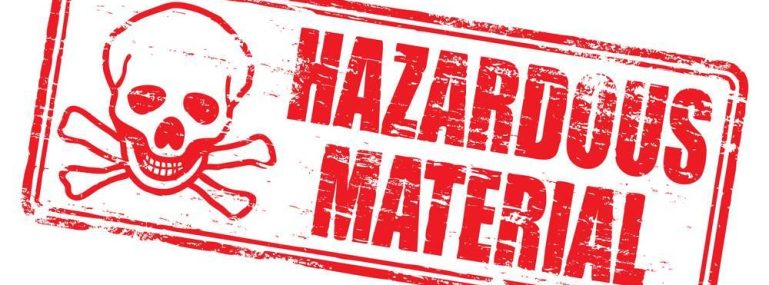The UN Economic Commission for Europe has published 8th revised edition of GHS . The electronic version is still not released and is expected to release by end of September 2019.
The major changes in the new version are
- New classification criteria for Chemical under pressure & aerosols
- New Hazard category
- A new annex on dust explosion hazards
- Added Precautionary pictogram
- Revised precautionary statements
- New provisions for the use of in vitro/ex vivodata and non-test methods
to assess skin corrosion and skin irritation - New labelling examples for sets or kits
- Editorial revision of Sections 2 and 3 of Annex 3
Major changes are summarized below:
1. Classification criteria change for aerosols
According to table 2.3.1, aerosols are to be classified in one of the three categories and it will be based on:
- their flammable properties
- their heat of combustion
- if applicable, test results from the ignition distance test, the enclosed space ignition test and the aerosol foam flammability test, performed in accordance with subsections 31.4, 31.5 and 31.6 of the United Nations Recommendations on the Transport of Dangerous Goods, Manual of Tests and Criteria
Listed below are the new aerosol classification criteria
- Category 1: Any aerosol that contains ≥ 85% flammable components (by mass) and has a heat of combustion of ≥ 30 kJ/g or Any aerosol that dispenses a spray that, in the ignition distance test, has an ignition distance of ≥ 75cm or Any aerosol that dispenses a foam that, in the foam flammability test, has:
- a heat of combustion of ≥ 20cm and a flame duration of ≥ 2 seconds
- a flame height of ≥ 4cm and a flame duration of ≥ 7 seconds
- Category 2: Any aerosol that dispenses a foam that, based on the results of the aerosol foam flammability test, does not meet the criteria for Category 1, and which has a flame height of ≥ 4cm and a flame duration of ≥ 2 seconds or Any aerosol that dispenses a spray that, based on the results of the ignition distance test, does not meet the criteria for Category 1 and which has:
- a heat of combustion of ≥ 20 kJ/g
- a heat combustion of < 20 kJ/g and an ignition distance of ≥ 15 cm
2. a heat of combustion of < 20 kJ/g and an ignition distance of < 15cm along with either, in the enclosed space ignition test:
- a time equivalent of ≤ 300 s/m3
- a deflagration density of ≤ 300 g/m3
- Category 3: Any aerosol that contains ≤ 1% flammable components (by mass) and that has a heat of combustion of < 20 kJ/g or Any aerosol that contains > 1% (by mass) flammable components or which has a heat of combustion of ≥ 20 kJ/g but which, based on the results of the ignition distance test, the enclosed space ignition test or the aerosol foam flammability test, does not meet the criteria for Category 1 or Category 2.
3. New Hazard category: Chemical under pressure
Chemicals under pressure are liquids or solid substances/mixtures, pressurized with a gas at a pressure of 200kPa (gauge) or more at 20 o C in a pressure receptacle other than aerosol dispensers and which are not classified as gases under pressure.
Below listed are the classification criteria for chemicals under pressure.
- Category 1: Any chemical under pressure that contains > 85% flammable components(by mass) and has a heat of combustion of > 20 kJ/g.
- Category 2: Any chemical under pressure that;
4. contains >1% flammable components (by mass) and has a heat of combustion <20kJ/g or that;
5. contains <85% flammable component (by mass) and has a heat of combustion of <20kJ/g.
Hazard statements and pictograms for chemicals under pressure are listed as below.
| Hazard category | Symbol | Signal word | Hazard statement | Symbol |
| 1 | Flame & gas cylinder | Danger | Extremely flammable chemical under pressure. May explode if heated. |  |
| 2 | Flame & gas cylinder | Warning | Flammable chemical under pressure. May explode if heated. |  |
| 3 | Gas cylinder | Warning | Chemical under pressure. May explode if heated. |  |
6. New Precautionary Pictograms for “Keep out of Reach of Children”
The following pictograms from AISE and JSDA to convey precautionary statement “Keep out of reach of children”.

7. New Labeling Example for Sets or Kits
A new example for labelling sets or kit is provided in example 10 appended to Annex7.Small removable inner containers are present in a kit/set.
- Inner container label
The following minimum information mustbe included on the label of each hazardous substance or mixture.
- Product identifier, and an identifier for each substance or mixture matching the identifier used on the outer packaging label and SDS for that substance or mixture, eg “Reagent 1” and “Reagent 2”.
- Pictogram(s).
- Signal word.
- The statement “Read full label”.
- Supplier identification (ie name and telephone number).
- Outer packaging label
In addition to the kit identifier, all the required GHS label elements must appear on the outer packaging for each hazard mixture/substance.
8. Dust explosion hazard -A new Annex
Annex 11 – Guidance on Other Hazards Not Resulting inClassification, will provide guidance on the identification of dust explosion hazard and need for assessment of risk, prevention, and hazard communication.
9. Minor changes – with regards to precautionary statements for skin irritation and serious eye damage
- Skin corrosion/irritation- classification to be mentioned as category 1,if the available data is limited & subcategories 1A, 1B or 1C cannot be assigned or as per the competent authority requirement (3.2.2.1.1.2).
- Serious eye damage/eye irritation-classification category to be mentioned as 2, where the available data is not enough for further categorization, or where the competent authority does not require categorization into 2A or 2B (3.3.2.1.2.1).





